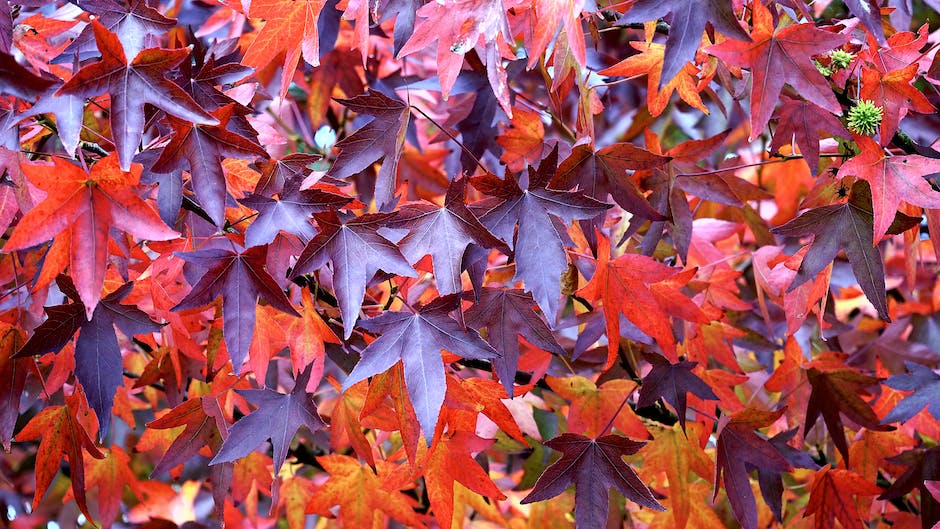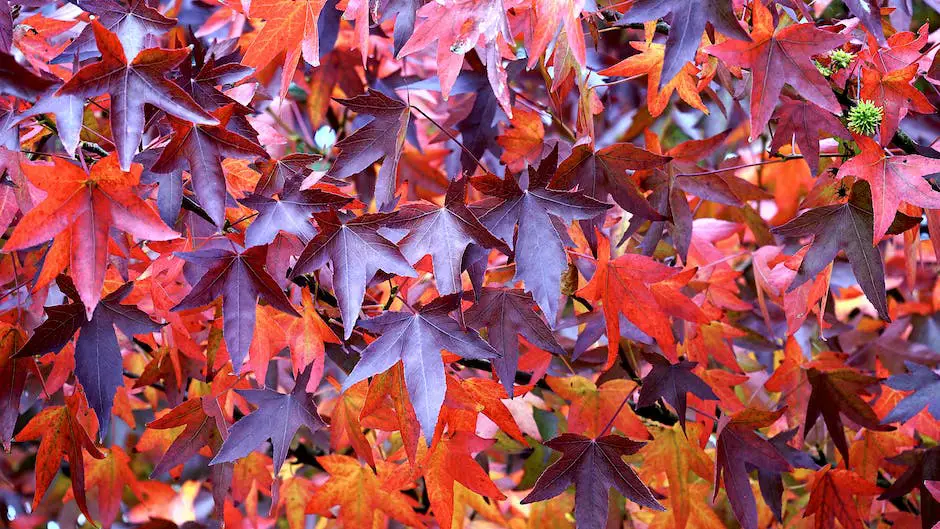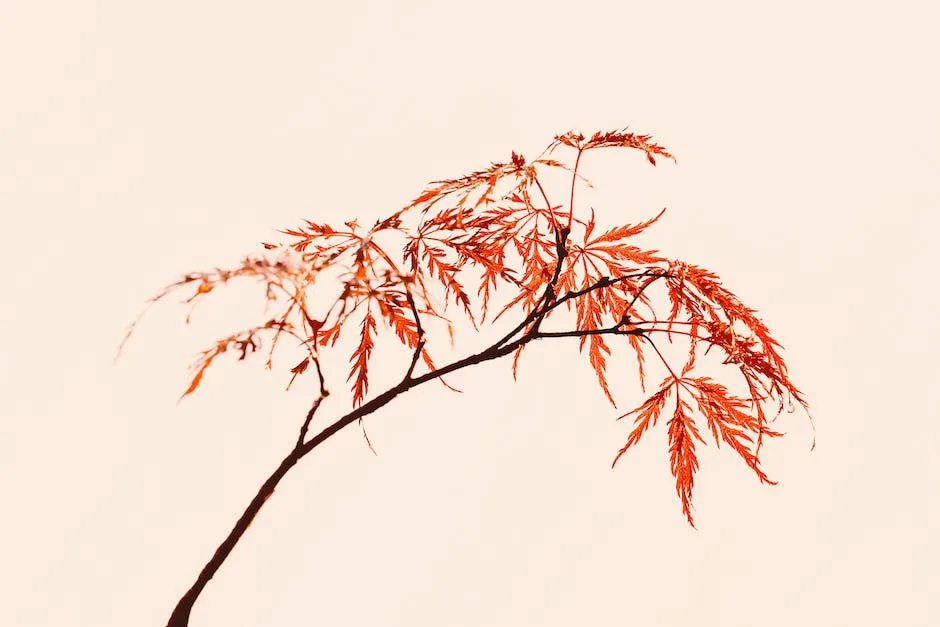There are many different species of maple trees, and not all of them are deer resistant. However, red maple trees are deer resistant. This means that deer are less likely to eat the leaves or bark of a red maple tree than they are of other kinds of maple trees.
There is no definitive answer to this question as deer resistance can vary depending on the area and the individual red maple tree. In general, however, red maples are not as attractive to deer as other types of trees and they are typically considered to be deer resistant.
Will deer eat red maples?
The leaves and twigs of the lower branches and saplings of maples are a great food source for whitetails. Usually, whitetails prefer the midland species, such as sugar maple and red maple, over the lowland species for food.
One of the best ways to protect your plants from deer is to install physical barriers. Nylon netting and burlap are two great options. Both will create a barrier that deer cannot cross, and will keep your plants safe from harm.
Do deer eat maple tree bark
Deer are known for their foraging habits, and will eat a variety of different plants in their natural environment. This can include leaves, grass, acorns, flowers, bark and small insects. If a deer gets into one’s yard, it may eat ornamental flowers, tree bark and garden vegetables. While deer may seem cute, they can cause significant damage to plant life, so it’s important to take steps to keep them out of your yard.
There are a variety of trees and shrubs that are less likely to be eaten by deer. Some of these include bald cypress, bayberry, cinquefoil, false cypress, forsythia, fringe tree, spirea, and spruce.
What animal eats red maple?
Red maples are an important part of the wildlife ecosystem. Animals use them for food, shade, and nesting habitat. Squirrels and other rodents feed on the fruits, while rabbits and deer eat the tender shoots and leaves. Red maples provide a vital service to the wildlife community and should be protected.
Hello,
I was reading an article about how saplings are a tasty snack for hungry deer and how this is causing a decline in their numbers in the south. Apparently, other factors also make it a tough life for saplings, so I thought I’d write a quick note about it.
It’s really sad to think about how these little plants are struggling to survive. Hopefully, people will start to take notice and take steps to help them out. Thanks for reading!
What is the best tree protection from deer?
If you’re looking to protect your plants from deer, there are a few different options for barriers you can use. Tree shelters, wire mesh, Vexar®, drain tile, spiral wraps, paper tree wraps, snow fence, or other material can all be effective at deterring deer from getting to your plants. Keep in mind, though, that deer can still browse plants that grow out the top of shorter barriers. So if you’re using a barrier that’s only a few feet tall, you may still need to take extra precautions to keep your plants safe.
Animal damage to Sugar Maple trees is a common problem. Squirrels, rabbits, porcupines, mice, and some birds often feed on the trees’ bark, buds, and twigs, which can cause significant damage.
How do I keep deer from eating my newly planted trees
Deer are a common problem for gardeners and can quickly destroy a carefully cultivated garden. If you’re struggling with deer eating your outdoor plants, there are a few things you can do to try to deter them.
First, choose plants that are known to be deer-resistant. There are many lists available online or from garden centers that can help you choose the right plants for your area.
Second, place bar soap near your outdoor plants. The scent of the soap can help to deter deer from coming into your garden.
Third, scatter human hair around your outdoor plants. Deer are sensitive to smells and the scent of human hair can be off-putting to them.
Fourth, apply a deer-repellant spray to your outdoor plants. There are many commercial products available, or you can make your own with ingredients like vinegar, garlic, and peppermint oil.
Finally, add a motion sensor near your outdoor plants. The sudden movement can startle deer and deter them from coming into your garden.
By following these tips, you can help to keep deer away from your outdoor plants.
There’s no denying that oaks are among the most important trees to whitetail deer. They provide a variety of food sources that deer rely on, from acorns to browse. Keep a close eye on the oak trees in your area, and you’re sure to see plenty of deer activity around them!
What trees do deer eat the most of?
Deer prefer certain foods over others and these preferred foods can change based on the season. White cedar, white pine, and maples are all preferred deer foods. White cedar is an evergreen with flat scalelike “leaves.” Some varieties are used for ornamental shrubbery. White pine is the only Michigan pine with five needles in a cluster. Maples are trees with buds opposite each other. The sugar maple has brownish or gray twigs with brown pointed buds.
All of these plants are favored by deer, especially in the spring when new growth is emerging. The best way to discourage deer from eating these plants is to fence them off or spray them with a deer-resistant repellent.
What is the most deer resistant plant
A lot of common flowers have a toxicity that deer avoid. This is because they have a strong scent that deer can’t stand. Some examples of these flowers are daffodils, foxgloves, and poppies. Deer also tend to stay away from fragrant plants with strong scents. This is because their sense of smell is very sensitive.
There are a few different ways to deter deer with noise. One is to use a radio that is activated by a motion detector. The noise of the radio will scare off the deer. Another way is to use pie pans, metal cans, or wind chimes that are suspended by strings. When the wind blows, the cans and chimes will make noise that will scare off the deer.
Which evergreen is the most deer resistant?
While no plant is ever entirely safe from deer, the following selections usually escape damage in all but the leanest of times:
Common boxwood (Buxus sempervirens)
Japanese pieris (Pieris japonica)
Mountain laurel (Kalmia latifolia)
Eastern red cedar (Juniperus virginiana)
Chinese juniper (Juniperus chinensis)
More selections that are often safe from deer include:
Andromeda (Pieris japonica)
Arborvitae (Thuja occidentalis)
Barberry (Berberis vulgaris)
Broom (Cytisus scoparius)
Butterfly bush (Buddleja davidii)
Caper bush (Capparis spinosa)
Carolina allspice (Calycanthus floridus)
Cherry laurel (Prunus laurocerasus)
Christmas fern (Polystichum acrostichoides)
Clethra (Clethra alnifolia)
Cotoneaster (Cotoneaster spp.)
Cranberry cotoneaster (Cotoneaster apicul
Red maple is a great wood for fuel, but it’s often low in quality because of susceptibility to defects and disease. The sap of red maple can be used for maple syrup.
What kills red maple trees
Verticillium wilt is a dangerous fungus that routinely kills maple trees. Also known as maple wilt, verticillium wilt begins at the root system and affects the entire tree. Symptoms of the disease include cankers and dieback, scorched leaves, and diseased branches. This fungus can cause disastrous effects and should be treated immediately if found.
Verticillium wilt is a common and serious fungal infection that can kill trees. This infection starts in the root system and works its way up the tree, resulting in cankers and dieback. Signs of maple wilt include scorched-looking leaves and diseased branches with unhealthy leaves. If you think your tree might be infected with verticillium wilt, contact a certified arborist or tree care professional for diagnosis and treatment.
What plant attracts deer the most
Perennial clover is a popular food plot planting for deer for good reason! Clover food plots provide attraction during hunting season, high-quality forage during spring and early summer, and several years of forage production with proper management.
Area repellents work by using strong odors to keep deer away from desired areas. They are usually applied around the perimeter of an area, or directly on plants that you want to protect. Some effective area repellents for deer include putrescent egg solids, ammonia soaps of higher fatty acids, predator urine, blood or meat meal, human hair, and bar soap.
What time of year do deer damage trees
Deer damage to trees typically occurs during the mating season, which can begin as early as September and last into February. Most damage occurs before the peak of this season in September and October. Bucks will rub their antlers on trees with low branches in a process called “buck rub.” This can damage the tree’s bark and leaves.
Photo of an oak tree
Oaks (Quercus) are beautiful, robust trees that are host to more caterpillars than any other tree. 532 species of caterpillars thrive on oaks, providing important nutrition needed for bird breeding success. Birds and other mammals also feed on the hard covered fruit produced by oaks, the acorn.
What are problems with maple trees
Diseases of maples are typically fungal in nature and affect the leaves, twigs, and branches of the tree. Anthracnose, leaf spots, powdery mildew, and Verticillium wilt are all common diseases that can be found on maples in landscapes and forests. Leaf scorch is less common, but can still be a problem.
Red maple roots are primarily horizontal and forms in the upper 25 cm (10 in) of soil. This permits the maple to have a greater grip on the soil, which helps to keep the tree from being uprooted during storms. Additionally, the roots help to anchor the tree in place.
What is the lifespan of a maple tree
Maples are a type of tree that can live for a very long time. The sugar maple, for example, can live up to 400 years, while the silver maple usually only lives for about a century. The red maple tree can even live for up to 300 years. All of these different types of maple trees have different lifespans, but they all manage to live for a very long time.
From what I can tell, using coffee grounds to keep deer away is more of an old wives tale than anything else. There is no scientific evidence that I could find to support the claim that coffee grounds repel deer. However, coffee grounds do give off a bitter smell, so it’s possible that this could deter deer from coming near your home. If you’re looking for a natural way to keep deer away, it might be worth a try!
How long do trees need to be protected from deer
Image result for tree wrap
Tree wrap is a material (usually plastic or paper) that is wrapped around the trunk of a tree to protect it from damage. It is often used on thin-barked or young trees to prevent them from being damaged by deer or other animals.
Tree wrap should be replaced every 3 months or so, as insects may infest the material or moisture could build up and cause problems.
If you have trees and shrubs that are regularly browsed by deer, it’s important to take measures to ensure their health. While they can withstand a certain amount of damage, over time it can take a toll. Once growth resumes in the spring, new lateral buds will produce vegetative growth that will gradually replace what was lost. In the meantime, take steps to protect your plants from further browse.
Warp Up
According to the University of Connecticut, red maple trees (Acer rubrum) are not deer resistant.
No, red maple trees are not deer resistant. While they are not asPalatable as other species, maples are still a preferred food source for deer.
Jackson Hill is a passionate arborist with years of experience in the field of trees. He developed his fascination with trees at a young age, spending countless hours exploring the forests and climbing trees. Jackson went on to study arboriculture and horticulture at Michigan State University and later earned a degree in forestry from the University of Michigan.
With his extensive knowledge and expertise, Jackson has become a trusted authority on trees and their impact on the environment. His work has helped shape the field of arboriculture and he continues to be a leading voice in the industry.
